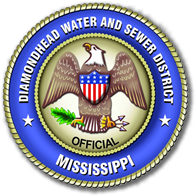About Precautionary Boil Water Notices & Boil Water Notices
Why do drinking water suppliers such as DWSD issue Precautionary Boil Water notices? Most are related to the occasional equipment malfunctions and pipeline breaks that increase the risk of contaminants entering the drinking water distribution system. When problems arise, as they do with all water supply systems, DWSD goes beyond the requirements of law to protect public health. The District will issue Precautionary Boil Water Notices as a precaution even when contamination is unlikely.
FAQ about Precautionary Boil Water Notices and drinking water contamination
What does boiling water accomplish?
Boiling is considered the safest and most effective method of water disinfection. Vigorous boiling for two minutes will kill any disease-causing microorganisms and parasites present in water. The flat taste of boiled water can be improved by aeration: pouring it back and forth from one container to another. In lieu of boiling, you may purchase bottled water or get water from another suitable source.
When should I boil my tap water?
It's prudent to boil water when your water supplier issues a Precautionary Boil Water Notice, when service has been interrupted, or when a natural disaster like a flood or hurricane has disrupted water service.
What is a Precautionary Boil Water Notice?
It is a notification that advises customers to boil tap water used for drinking, cooking and ice-making until tests verify the water is safe. The tests generally takes 48 to 72 hours to complete. It is not necessary to boil water for showering or other external uses.
When are Precautionary Boil Water Notices issued?
Water suppliers are required by the U.S. Environmental Protection Agency to notify customers to boil water when water samples indicate contamination or when conditions exist that make the water supply vulnerable to contamination. These conditions include a drop in system pressure to below 20 pounds per square inch, a break in a major distribution line, a malfunction of the treatment system, or a cross-connection to a contaminated water supply. The majority of Precautionary Boil Water notices issued in the Diamondhead Water & Sewer District are for pressure drops below 20 psi due to scheduled water shutdowns for maintenance or unscheduled water shutdowns for emergency repairs.
Why do these conditions call for boiling water?
When service is interrupted and distribution lines are emptied, contaminants can enter the lines that transport water. Although waterborne diseases are extremely rare, they can be serious. The risk is higher for infants, the elderly and persons with immune deficiency disorders. The District issues Precautionary Boil Water Notices even if the possibility of contamination is remote because we do not want to take any chances with your family's health.
How does DWSD inform customers about Precautionary Boil Water Notices?
The District may use a variety of methods to communicate. Methods we use may include sending alerts via email or text (see this site on how to sign up for our ALERTS) , delivering flyers door-to-door, posting notices on the website home page which describes the Precautionary Boil Water Notice area, posting on our Facebook page, automated robo-calls or texts when specific addresses are known, and making personal calls to water users such as medical facilities and nursing homes. The same methods are used to notify customers that the notice has ended and the Precautionary Boil Water Notice has been lifted. Be sure to monitor our website for updates during Precautionary Boil Water Notices. If you are under a Precautionary Boil Water Notice it is recommended:
- Do not drink tap water.
- Do not use ice made from recent tap water.
- Do not use tap water to make drinks, juices, or fountain soft drinks.
- Cook with tap water ONLY if food is boiled for at least one minute.
- Wash dishes, fruits and vegetables in boiled water or water that has been disinfected with bleach. Using your home dishwasher is not recommended.
- Brush your teeth with boiled or bottled water.
- Wash your hands and bathe as usual. Bathing is safe as long as no water is swallowed.
When your Precautionary Boil Water Notice is lifted it is recommended to
Flush faucets for a total of 10 minutes to introduce system water throughout house plumbing.
For Example
Faucet No.1: Run for 10 minutes
Faucets No.1 & 2: Run both for 5 minutes
Faucets No. 1, 2 & 3: Run all three for 3-4 minutes
- Flush any faucet a minimum of 2 minutes to ensure clearing of the line serving the faucet.
- Discard any drinks, ice, food, etc, made during the boil water notice.
- Rewash any food or drink contact items (knifes, forks, plates, etc.) with "cleared" system water.
- Check water filters (in faucets, refrigerators and elsewhere) and replace if necessary.
- Do not use water from your hot water heater for drinking until several exchanges of the tank have occurred.
- Run dishwasher through a cycle or two before washing dishes.
- In the event of a water main break, residents in nearby areas may experience discolored water issues due to the disruption of the system.
This may be remedied by running the water for a few minutes to clear out the natural minerals which were disturbed from the interior walls of the water main and main line valves which are operated during the repairs.
NOTE: The discoloration is NOT dirt, mud or contamination and is a common effect of a water main break.
More information about Boil-water notices can be found on the Mississippi State Department of Health's web page. Type boil water in the search box and click search.

